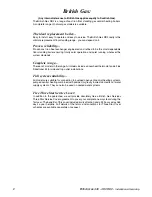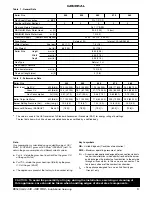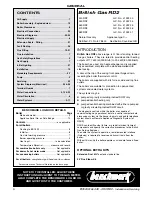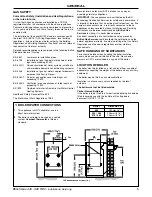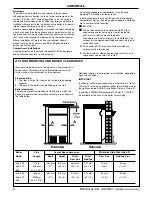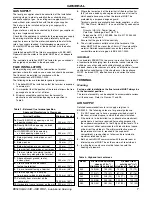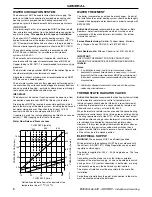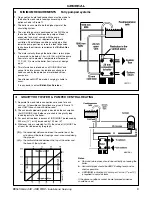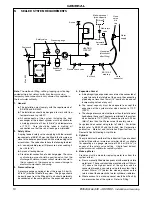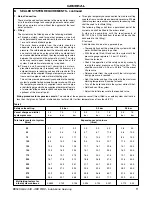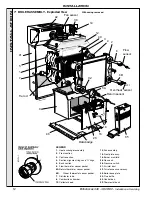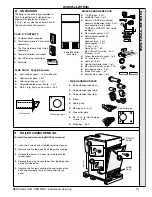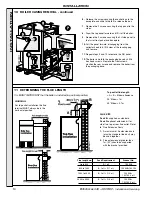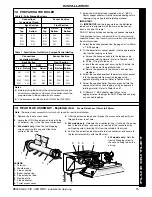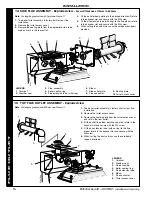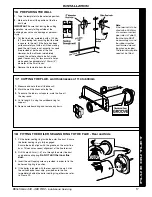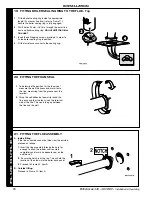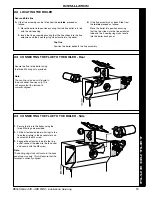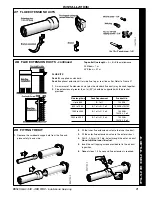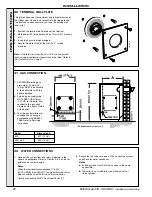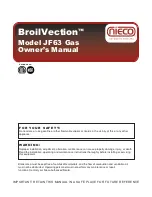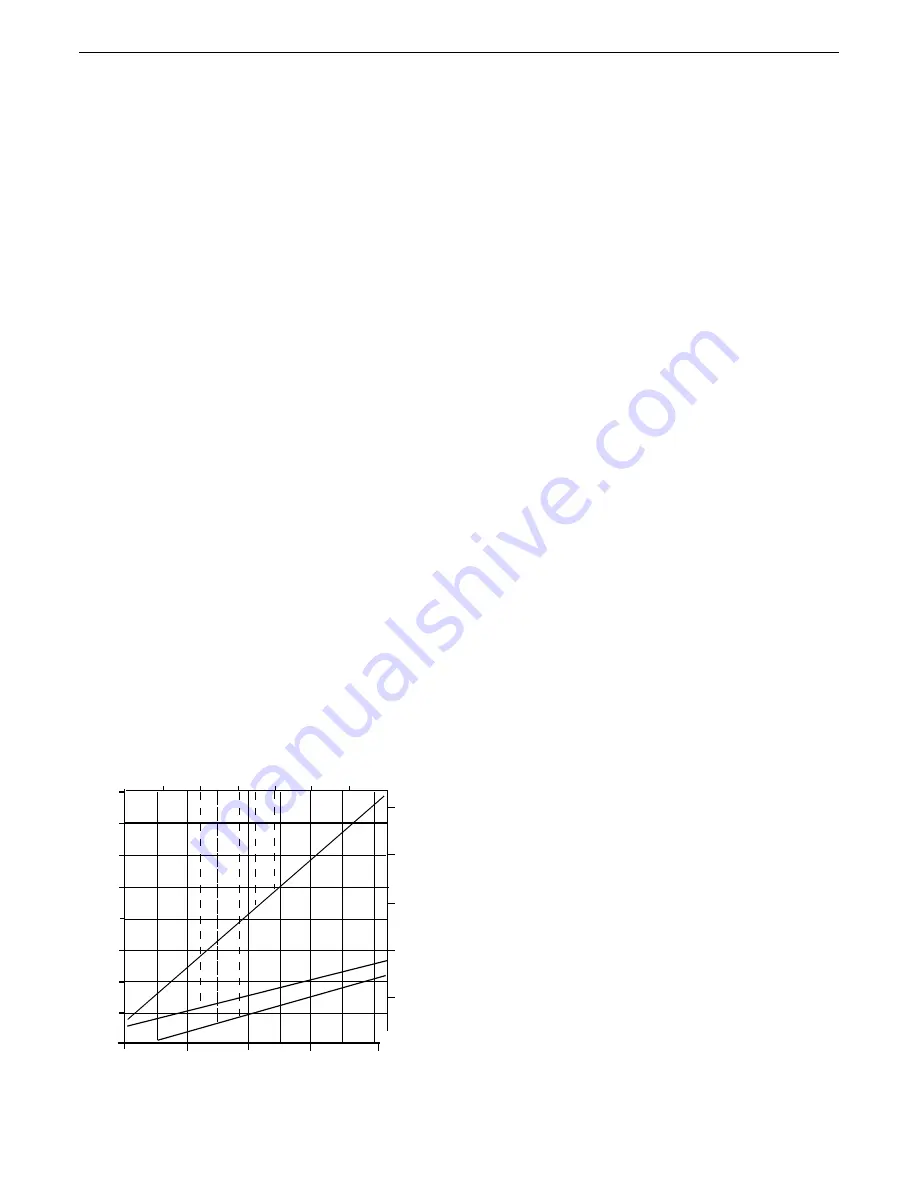
8
British Gas 440 - 480 RD2 -
Installation & Servicing
GENERAL
Water Flow Rate and Pressure Loss
WATER TREATMENT
The boiler incorporates a cast iron heat exchanger. As part of
the installation the central heating system should be thoroughly
flushed with appropriate water treatment in order to comply with
BS7593:1992
British Gas Services recommend the use of Fernox or Betz
Dearborn water treatment products which must be used in
accordance with the manufacturers instructions. For further
information contact :
Fernox Manufacturing. Co. Ltd., Tandem House, Marlowe
Way, Croydon, Surrey CRO 4XS, tel 0870 601 5000
or
Betz Dearborn Ltd., Widnes, Cheshire, tel. 0151 424 5351
IMPORTANT.
ANY OTHER TREATMENT FOR THIS PRODUCT MAY
RENDER THE GUARANTEE OF BRITISH GAS SERVICES
INVALID.
Notes.
1. If an inhibitor is used, and in hard water areas where
treatment to prevent lime deposits is necessary, it is most
important that the water treatment MUST be maintained at
the correct concentrations recommended by the treatment
manufacturer.
2. Artificially softened water must not be used in the system,
under any circumstances.
THERMOSTATIC RADIATOR VALVES
British Gas Services recommend that heating systems utilising
full thermostatic radiator valve control of temperature in
individual rooms should also be fitted with a room thermostat
controlling the temperature in a space served by radiators not
fitted with such a valve, as stated in BS. 5449.
When thermostatic radiator valves are used, the space heating
temperature control over a living / dining area or hallway having
a heating requirement of at least 10% of the boiler heat output
should be achieved using a room thermostat, whilst other rooms
are individually controlled by thermostatic radiator valves.
However, if the system employs thermostatic radiator valves on
all radiators or two port valves without end switches then a
bypass must be fitted in order to ensure a flow of water should
all the valves be in the closed position.
ELECTRICAL SUPPLY
WARNING. The appliance MUST be efficiently earthed.
Wiring external to the appliance MUST be in accordance with
the current I.E.E. (BS 7671) Wiring Regulations and any local
regulations which apply.
The boiler is supplied for 230 V ~ 50 Hz single phase. The fuse
rating is 3A.
Connection must be made in a way that allows complete
isolation of the electrical supply - such as a double pole switch,
having a 3mm (
1/8
") contact separation in both poles, or a plug
and socket serving only the boiler and system controls.
The means of isolation must be accessible to the user after
installation.
For bathroom installations the point of connection to the mains
must be situated outside the bathroom.
FLOW RATE (gals/hr)
PRESSURE
LOSS
(mbar)
FLOW RATE (l/min)
PRESSURE
LOSS
(ft.water)
140
100
60
20
10
20
30
40
50
1.0
2.
3.0
4.0
5.0
200
400
600
470 & 480
440
460
470
480
450 &
460
440
450
MEX
1886
Dotted lines indicate flow rates equivalent to a
temperature rise of 11
O
C (20
O
F)
WATER CIRCULATION SYSTEM
The boiler must NOT be used for direct hot water supply. The
boiler is suitable for connection to pumped open vent central
heating systems, pumped central heating combined with
pumped or gravity indirect domestic hot water supply systems.
IMPORTANT
A minimum length of 2m of copper pipe MUST be fitted to both
flow and return connections from the boiler before connection to
any plastic piping. This applies to ALL types of installation.
The boiler is NOT suitable for gravity heating systems. The
hydraulic resistance of the boilers at
maximum output with 11
O
C
(20
O
F) temperature differentials are shown in the graph below.
Maximum boiler operating temperature should be 82
O
C (180
O
F).
The central heating system should be in accordance with
BS. 6798 and, in addition, for smallbore and microbore
systems, BS. 5449:1.
The domestic hot water system, if applicable, should be in
accordance with the relevant recommendations of BS. 5546.
Copper tubing to BS. 2871:1 is recommended for water carrying
pipework.
The hot water storage cylinder MUST be of the indirect type and
should preferably be manufactured of copper.
Single feed, indirect cylinders are not recommended and MUST
NOT be used on sealed systems.
The hot water cylinder and ancillary pipework not forming part of
the useful heating surface should be lagged to prevent heat loss
and any possible freezing - particularly where pipes run through
roof spaces and ventilated underfloor spaces.
IMPORTANT.
The boiler must be vented. If venting cannot be done via a flow
connection a separate vent MUST be fitted by the installer.
Draining taps MUST be located in accessible positions, which
permit the draining of the whole system - including the boiler and
hot water storage vessel. They should be at least
1/2" BSP
nominal size and be in accordance with BS. 2879.
If required, a drain tap (not supplied) may be fitted to an unused
bottom (1" BSP) tapping on the front of the boiler.


